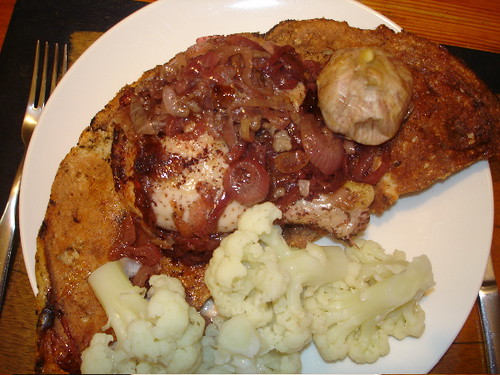
The Upper Galilee is one of my favourite areas to visit in Israel. Most of our delicious fruit comes from this area: apples, pears, plums, cherries, raspberries and grapes….Ah! the grapes. It is chockful of vineyards producing some delicious wines. Yes, Israel is producing some very nice wines thanks to a number of boutique wineries (not all of them in the Galilee) that have popped up over the years. Some of my favourite wineries are Flam, Gito, La Terra Promessa, Chillag, Amphorae, Galil Mountain, Dalton, Recanati, Margalit, Castel and Carmel’s (click on Carmel Fine Wines) new line of single vineyard and private collection wines.


There are also boutique dairies producing some top class cheeses and yogurts, boutique olive oil producers and delicious honey.

I am always relaxed when I go to the North and there are a number of zimmers or cabins that you can stay at for the weekend. Most of the zimmers include a homemade Israeli breakfast with omelets, homemade jams, assorted bread, Israeli salad, olives and cheeses. I find the zimmers a perfect way to getaway for a romantic weekend. Most of them have a jacuzzi for two!

If you want luxury, then I recommend staying at Israel’s only Relais & Chateau hotel, Mitzpe Hayamim. It is a beautiful spa-hotel with a great view of the Hula valley, the Kinneret (Sea of Galilee) and even the Mediterranean to the west.


The scenery is breathtaking and it is a great place to go on long nature walks and hikes in the mountains.


The Upper Galilee always makes me think of wonderful Middle Eastern dishes. I love kubbeh, grilled meats and all the different mezzes, such as roasted cauliflower and aubergine, hummous, red pepper salad, etc.

Usually when I serve a Middle Eastern dish, I buy the salads from a very sweet Druze woman who has a restaurant in Dalyit al Karmel and comes to the a shopping mall near my house to sell her delicious salads, lamb kubbeh and baklawa. I like to buy her hoummous, cauliflower puree, red pepper hummous and her kubbeh. Shown in the two photos above. The fourth salad on the bottom right is made of courgettes.

One of my favourite dishes is Makloubeh, which means “Upside Down”. It is the Palestinian national dish and is also made in Jordan and a few other Middle Eastern countries. This dish can also be made with lamb or a mixture of chicken and lamb.
Don’t be shocked by the amounts of oil. You do not have to use that much.
If you are using kosher chicken do not add any extra salt. You get enough salt from the chicken and the salted eggplant. I would add a little more of the spices to the dish, but I like fragrant dishes.
-
2
whole chickens
skinned and quartered (or 8 chicken thighs)
-
3-1/2
cups
canola oil
plus 3 tablespoons
-
1
teaspoon
fresh grated nutmeg
-
1
teaspoon
allspice
-
1
teaspoon
cumin powder
-
Salt to taste
-
4
saffron threads
-
2
cinnamon sticks
-
5
whole cardamom pods
-
3
peppercorns
-
5
cups
water
-
Freshly ground black pepper
-
2
large heads of cauliflower
separated in to florets
-
2
large eggplant
peeled, cubed and salted; place in a colander so the water can drain
-
2
large onions
halved through the root end, thinly sliced, core still attached
-
5
cups
medium grain rice
-
1/2
teaspoon
ground cardamom
-
1/2
teaspoon
allspice
-
4
saffron threads
-
1/2
teaspoon
fresh nutmeg
-
1/4
teaspoon
ground cinnamon
-
Salt and freshly ground pepper
-
1/3
cup
toasted pine nuts for garnish
-
In a large saucepan, brown both sides of the chicken in 1/2 cup canola oil. Once browned, add nutmeg, allspice, cumin powder, salt, saffron, cinnamon sticks, cardamom seeds, and peppercorns.
-
Add approximately 5 cups of water and bring to a boil. Add freshly ground pepper. Cover and cook over low-medium heat for about 15 to 20 minutes or until the meat begins to pull away from the bone. Set the chicken and 2 cups of broth aside.
-
Fry the cauliflower in a large pot with 3 cups of canola oil until golden brown. Remove and let drain on paper towels. Drain the eggplant and fry as you did the cauliflower. Set both the fried cauliflower and eggplant aside. Heat 3 tablespoons of canola oil in very large pot. When the oil is hot, not smoking, add the onions and saute them for approximately 10 minutes. Place the chicken pieces on top of the onions and cook together for a few minutes then cover and let sit for 10 minutes.
-
Meanwhile, rinse the rice about 5 or 6 times until the water runs clear. Put the rice in a bowl, add the spices and mix well.
-
Place the fried eggplant and cauliflower on top of the chicken and then put the rice on top of the vegetables. Add the 2 cups of reserved chicken broth (make sure the whole spices are not in the broth) and water to just barely cover the rice. Bring to a boil, then lower to a simmer and cover. When the water has been absorbed, the dish is done, approximately 25 minutes.
-
Remove the pot from the heat and let rest for about 10 to 15 minutes. Place a large serving plate on top of the dish and flip the pot and plate over. Carefully lift the pot off the plate and sprinkle with toasted pine nuts.






























































